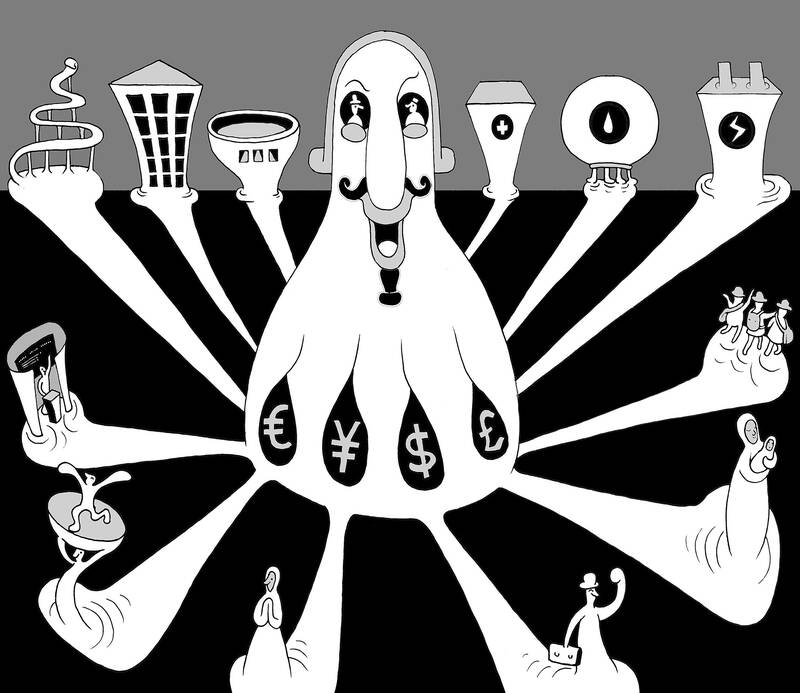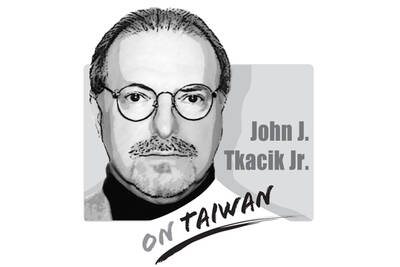The key to economic development and ending poverty is investment. Nations achieve prosperity by investing in four priorities. Most important is investing in people, through quality education and healthcare. The next is infrastructure, such as electricity, safe water, digital networks and public transport. The third is natural capital, protecting nature. The fourth is business investment. The key is finance: mobilizing the funds to invest at the scale and speed required.
In principle, the world should operate as an interconnected system. Rich countries, with high levels of education, healthcare, infrastructure and business capital, should supply finance to poorer countries, which must urgently build up human, infrastructure, natural and business capital.
Money should flow from rich to poor countries. As emerging-market countries become richer, profits and interest would flow back to rich countries as returns on their investments.

Illustration: Mountain People
That is a win-win proposition. Rich and poor countries would benefit. Poor countries become richer, and rich countries earn higher returns than if they invested only in their own economies.
Strangely, international finance does not work that way. Rich countries invest mainly in rich economies. Poorer countries get only a trickle of funds, not enough to lift them out of poverty. The poorest half of the world — low-income and lower-middle-income countries — produces about US$10 trillion per year, while the richest half of the world — high-income and upper-middle-income countries — produces about US$90 trillion.
Financing from the richer half to the poorer half should be about US$2 trillion to US$3 trillion per year. In reality, it is a small fraction of that.
The problem is that investing in poorer countries seems too risky. This is true in the short run. Suppose that the government of a low-income country wants to borrow to fund public education. The economic returns to education are very high, but need 20 to 30 years to realize, as today’s children progress through 12 to 16 years of schooling and only then enter the labor market.
However, loans are often for only five years, and are denominated in US dollars rather than the national currency.
Suppose the country borrows US$2 billion today, due in five years. That would be fine if in five years, the government can refinance the US$2 billion with another five-year loan.
With five refinance loans, each for five years, debt repayments are delayed for 30 years, by which time the economy would have grown sufficiently to repay the debt without another loan.
However, at some point along the way, the country would likely find it difficult to refinance the debt. Perhaps a pandemic, a Wall Street banking crisis or election uncertainty would scare investors.
When the country tries to refinance the US$2 billion, it finds itself shut out from the financial market. Without enough money to hand, and no new loan, it defaults, and lands in the IMF emergency room.
Like most emergency rooms, what ensues is not pleasant to behold. The government slashes public spending, incurs social unrest and faces prolonged negotiations with foreign creditors. In short, the country is plunged into a deep financial, economic and social crisis.
Knowing this in advance, credit-rating agencies such as Moody’s Investors Service and S&P Global give the countries a low credit score, below “investment grade.”
As a result, poorer countries are unable to borrow long term. Governments need to invest for the long term, but short-term loans push governments to short-term thinking and investing.
Poor countries pay very high interest rates. While the US government pays less than 4 percent per year on 30-year borrowing, the government of a poor country often pays more than 10 percent on five-year loans.
The IMF advises the governments of poorer countries not to borrow very much. In effect, the IMF tells the government that it is better to forgo education — or electricity, safe water or paved roads — to avoid a debt crisis. That is tragic advice. It results in a poverty trap, rather than an escape from poverty.
The situation has become intolerable. The poorer half of the world is being told by the richer half: decarbonize your energy system; guarantee universal healthcare, education and access to digital services; protect your rainforests; ensure safe water and sanitation; and more.
However, they are somehow to do all of this with a trickle of five-year loans at 10 percent interest.
The problem is not with the global goals. These are within reach, but only if the investment flows are high enough. The problem is the lack of global solidarity. Poorer nations need 30-year loans at 4 percent, not five-year loans at more than 10 percent. They need much more financing.
Poorer countries are demanding an end to global financial apartheid.
There are two ways to accomplish this. The first is to expand about fivefold the financing by the World Bank and the regional development banks — such as the African Development Bank. Those banks can borrow at 30 years and about 4 percent, and on-lend to poorer countries on those favorable terms. Yet their operations are too small. For the banks to scale up, G20 countries — including the US, China and EU nations — need to put a lot more capital into those multilateral banks.
The second way is to fix the credit-rating system, the IMF’s debt advice and the financial management systems of the borrowing countries. The system needs to be reoriented toward long-term sustainable development.
If poorer countries can borrow for 30 years, rather than five years, they would not face financial crises in the meantime. With the right kind of long-term borrowing strategy, backed by more accurate credit ratings and better IMF advice, poorer countries would access much higher flows on much more favorable terms.
The major countries have four meetings on global finance this year: in Paris in June, Delhi in September, the UN in September and Dubai in November.
If big countries work together, they can solve this. That is their real job, rather than fighting endless, destructive and disastrous wars.
Jeffrey D. Sachs, a professor and director of the Center for Sustainable Development at Columbia University, is president of the UN Sustainable Development Solutions Network. The views expressed in this column are his own.
Chinese agents often target Taiwanese officials who are motivated by financial gain rather than ideology, while people who are found guilty of spying face lenient punishments in Taiwan, a researcher said on Tuesday. While the law says that foreign agents can be sentenced to death, people who are convicted of spying for Beijing often serve less than nine months in prison because Taiwan does not formally recognize China as a foreign nation, Institute for National Defense and Security Research fellow Su Tzu-yun (蘇紫雲) said. Many officials and military personnel sell information to China believing it to be of little value, unaware that
Before 1945, the most widely spoken language in Taiwan was Tai-gi (also known as Taiwanese, Taiwanese Hokkien or Hoklo). However, due to almost a century of language repression policies, many Taiwanese believe that Tai-gi is at risk of disappearing. To understand this crisis, I interviewed academics and activists about Taiwan’s history of language repression, the major challenges of revitalizing Tai-gi and their policy recommendations. Although Taiwanese were pressured to speak Japanese when Taiwan became a Japanese colony in 1895, most managed to keep their heritage languages alive in their homes. However, starting in 1949, when the Chinese Nationalist Party (KMT) enacted martial law

“Si ambulat loquitur tetrissitatque sicut anas, anas est” is, in customary international law, the three-part test of anatine ambulation, articulation and tetrissitation. And it is essential to Taiwan’s existence. Apocryphally, it can be traced as far back as Suetonius (蘇埃托尼烏斯) in late first-century Rome. Alas, Suetonius was only talking about ducks (anas). But this self-evident principle was codified as a four-part test at the Montevideo Convention in 1934, to which the United States is a party. Article One: “The state as a person of international law should possess the following qualifications: a) a permanent population; b) a defined territory; c) government;
The central bank and the US Department of the Treasury on Friday issued a joint statement that both sides agreed to avoid currency manipulation and the use of exchange rates to gain a competitive advantage, and would only intervene in foreign-exchange markets to combat excess volatility and disorderly movements. The central bank also agreed to disclose its foreign-exchange intervention amounts quarterly rather than every six months, starting from next month. It emphasized that the joint statement is unrelated to tariff negotiations between Taipei and Washington, and that the US never requested the appreciation of the New Taiwan dollar during the